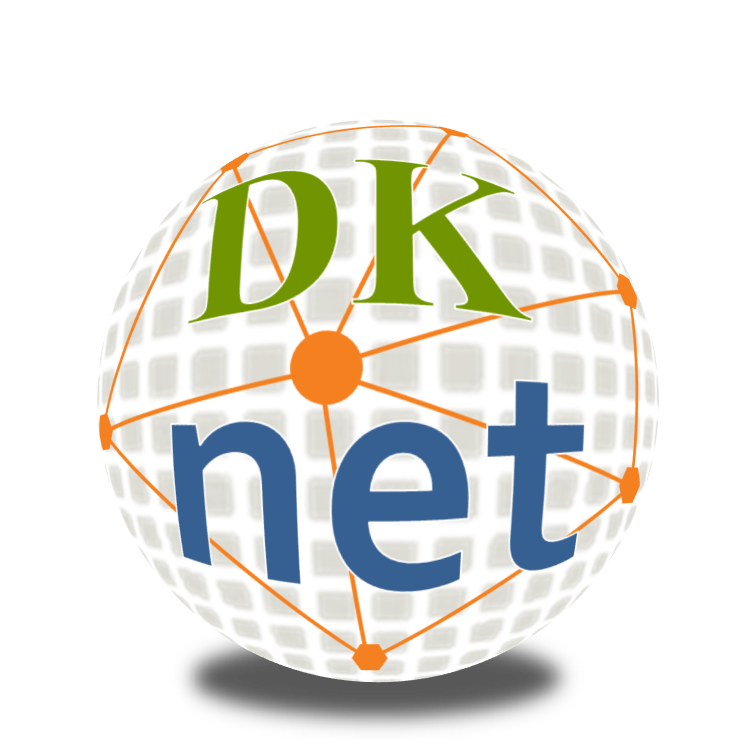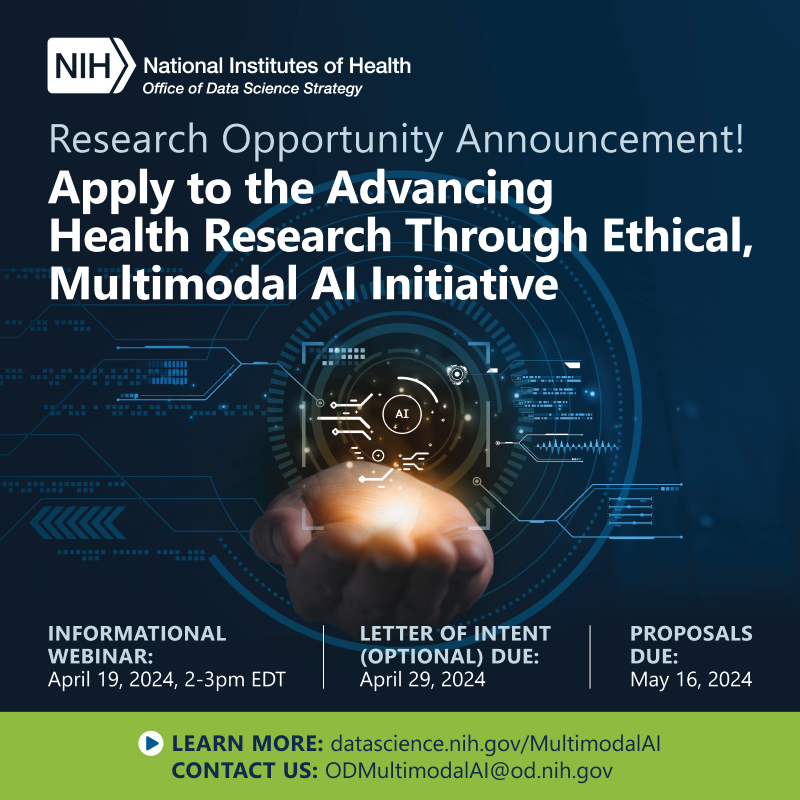Leaving Community
Are you sure you want to leave this community? Leaving the community will revoke any permissions you have been granted in this community.
NIH Funding Opportunity: Human Islet Research Network - Consortium on Modeling Autoimmune Diabetes (HIRN-CMAD) (UG3/UH3 Clinical Trial Not Allowed)
Here is the information from NIH:
"Human Islet Research Network - Consortium on Modeling Autoimmune Diabetes (HIRN-CMAD) (UG3/UH3 Clinical Trial Not Allowed
This Notice of Funding Opportunity (NOFO) welcomes applications for the Consortium on Modeling Autoimmune Diabetes (CMAD) that supports the development of in vitro and in vivo models of type 1 diabetes (T1D) to enable studies of human T1D pathophysiology and to serve as platforms for preclinical assessments of new T1D interventions. CMAD is part of the Human Islet Research Network (HIRN).
Key dates
Letter of Intent Due Date: November 6, 2023
Application Due Date: March 20, 2024
Purpose
This Notice of Funding Opportunity (NOFO) solicits applications to participate in a new consortium being added to the Human Islet Research Network (www.hirnetwork.org) - the Consortium on Modeling Autoimmune Diabetes (HIRN-CMAD). The goal of the HIRN-CMAD consortium will be designed to develop and optimize in vitro and in vivo disease models that enable the study of human islet and immune interactions in type 1 diabetes (T1D).
HIRN-CMAD awards will use the UG3/UH3 cooperative agreement funding mechanism. The UG3 phase is designed to allow exploratory studies to establish the initial concept of such model systems, with milestones focused around replicating key aspects of human T1D pathophysiology. The subsequent UH3 phase will be expected to refine and validate the utility of the models for mechanistic studies of islet-immune interactions and for testing new and novel therapies. A UG3 project that meets its milestones will be administratively considered by the NIDDK for transition to the UH3 award. Applicants responding to this NOFO must address objectives for both the UG3 and UH3 phases.
Background
In 2014, NIDDK established the Human Islet Research Network (HIRN) to organize and support collaborative research focused on the loss of functional beta cell mass in T1D. HIRN’s overall mission is to better understand how human beta cells are lost in T1D, and to find innovative strategies to protect or replace functional beta cell mass in people with diabetes. The HIRN program is configured as a modular network of small research consortia, each defined by a specific set of research priorities. The network structure helps facilitate interactions between small communities of investigators organized around common biological and/or technological challenges, with the overall goal of developing innovative strategies for the treatment, prevention, and monitoring of T1D.
The HIRN-Consortium on Modeling Autoimmune Interactions (HIRN-CMAI) and the Consortium on Human Islet Biomimetics (CHIB) are two of the four founding HIRN consortia. HIRN-CMAI investigators have been working to develop innovative in vivo models of human T1D immunobiology that can be used by the research community to measure the molecular and cellular events that lead to loss of human beta cell function in T1D and for testing of innovative therapies. HIRN-CHIB investigators have focused on designing and building micro-physiological system (MPS) platforms that support the survival, maintenance, and function of human islets for prolonged periods of time. These also incorporated immune components to mimic aspects of the autoimmune response and approaches for immune modulation in vitro. HIRN-CMAI investigators have made tremendous strides toward establishing mice with humanized immune components that allowed the exploration of human innate and adaptive immunity in T1D and identification of thymic selection defects that may lead to disease. Progress has also been made in cataloguing and cloning islet-infiltrating T cells and developing regulatory T cells with chimeric antigen receptors to target and protect human islets. HIRN-CHIB investigators have developed in vitro devices that enabled durable human islet culture with measurement of hormone release, in situ imaging, and real-time functional assessment through biosensors. Some MPS devices allowed interactions between vascularized islet and immune cells and demonstrated T cell migration, extravasation, and beta cell killing. Moreover, there has been great progress within and outside both consortia in differentiating iPSC lines toward pancreatic islet, immune, and mesenchymal lineages that pave the way toward establishing fully isogenic human systems to study T1D using in vitro and in vivo model systems.
HIRN-CMAD is designed to promote collaboration among scientists involved in both humanized mouse and human organ-on-a-chip efforts to advance T1D research along the translational pipeline. Projects involving bioengineers, cell biologists, immunologists, and endocrinologists are expected to lead to unique synergies that will optimize preclinical developments and translational research in T1D. It is anticipated that the development of these new/advanced models will contribute to a better understanding of the etiology/pathogenesis of T1D, uncover mechanisms underlying diabetes heterogeneity, and lead to improved evaluation of targeted therapies.
Research Opportunities and Scope
HIRN-CMAD is expected to build upon existing technologies and advances made using in vitro and in vivo modeling strategies to create combined, multi-faceted, multi-component systems that will support mechanistic interrogation of T1D pathogenesis/pathophysiology. While no one model will be a perfect representation of human disease, each in vivo and in vitro model system should be designed to address a key feature of human T1D. Each model comes with certain experimental limitations and unique capabilities to probe the dynamics of islet and immune cell changes during disease progression. These platforms should be further adapted to identify or test therapies designed to prevent, delay, or reverse steps in T1D pathogenesis. T1D models are particularly needed to study early islet dysfunction, autoimmunity initiation, and/or other metabolic perturbations present during the early stages of disease for which there are still few clinical interventions. Applicants are strongly encouraged to include both in vivo and in vitro models in their research plan as powerful complementary approaches to interrogate T1D biology.
Studies that are of interest could include the following but are not limited to:
- Fully isogenic modeling of islet cells and immune cells: Current models mostly rely on experienced human immune cells recovered from patients to study T1D autoimmunity. Of particular interest are studies that employ isogenic immune, stromal, and islet components generated from common iPSC lines to establish platforms to study T1D-related changes in lymphocyte development and the expansion of pathogenic populations. Technologies are also needed to monitor changes in immune population dynamics in response to changes in islet cells, such as how upregulation of islet neoantigens and the adoption of the senescence-associated secretory phenotypes may trigger immune activation.
- Modeling the islet niche: Incorporation of multiple cell types within the islet niche with proper spatial organization may ultimately be required to recapitulate islet physiology under both normal and pathological conditions. For example, models that include elements of the nervous system, as well as fully formed intra-islet vasculature including endothelial cells and pericytes, may be necessary to move the field forward. Other aspects of islet niche organization and function that remain to be tested in these advanced, multi-component model systems include the role of ECM components and exogenous soluble factors, including circulating hormones and cytokines, in the maintenance, growth, and/or destruction of human islets in T1D.
- Changes in islet function and behavior: Current stem cell derived islet-like cells still do not reproduce many key features of primary islet physiology. The ability to reproducibly generate islets with all representative endocrine cell types in appropriate ratios and spatial arrangements remains a challenge for the field. Improvements in cell composition, identity, and structure are needed to recreate an islet mini organ more accurately resembling an endogenous islet. Mechanistic insights into alpha cell and beta cell dysfunction and changes in islet cell identity, function, or behaviors (gene expression, antigen presentation, etc.) that occur early in the disease process may be gained in these systems that will have implications for initiating pathogenic islet-immune interactions. Novel tools, reagents, and technologies are also needed to enable detection and monitoring of changes in islet cell identity and function, especially in the context of immune responses and other environmental cues such as metabolic stress, viral infection, etc.
- Recapitulating autoimmune pathogenesis:
- Developing platforms needed to interrogate T1D-relevant changes in lymphocyte development, expanding the types of immune cells that develop or that may be assayed in the in vitro or in vivo systems (including B cells and plasma cells), and devising/deploying new technologies as needed to monitor changes in immune cell population dynamics as they respond to changes in islet structure and function over time in both in vitro and in vivo models.
- Mechanistic dissection of human thymocyte development and function in the context of T1D, and to enable studies exploring the role of the pancreatic lymph node or gut mucosal immune cells in T1D development.
- Identification of therapeutic targets and testing: Progress on optimizing these models should enable the identification of new therapeutic targets capable of modulating islet dysfunction and/or autoimmunity. Such studies should also be used to verify their utility for preclinical efficacy and safety testing. Specific in vivo models could be designed to test immunotherapies directed at certain immune effectors, regulators, and tolerance, as well as to assess engineered islet replacement therapies that are designed to evade allogeneic and autoimmune responses. Similarly, in vitro models could be adapted to provide “pre-clinical assessments on a chip” that may eventually replace existing models used for therapeutics testing.
eRA Service Desk (Questions regarding ASSIST, eRA Commons, application errors and warnings, documenting system problems that threaten submission by the due date, and post-submission issues)
Finding Help Online: https://www.era.nih.gov/need-help (preferred method of contact)
Telephone: 301-402-7469 or 866-504-9552 (Toll Free)
General Grants Information (Questions regarding application instructions, application processes, and NIH grant resources)
Email: GrantsInfo@nih.gov (preferred method of contact)
Telephone: 301-637-3015
Grants.gov Customer Support (Questions regarding Grants.gov registration and Workspace)
Contact Center Telephone: 800-518-4726
Email: support@grants.gov
Albert Hwa, Ph.D.
National Institute of Diabetes and Digestive and Kidney Diseases (NIDDK)
Telephone: 301-451-1525
Email: albert.hwa@nih.gov
Maggie Morris Fears, Ph.D.
National Institute of Allergy and Infectious Diseases (NIAID)
Telephone: 301-761-5444
Email: maggie.morrisfears@nih.gov
Elena Sanovich, Ph.D.
National Institute of Diabetes and Digestive and Kidney Diseases (NIDDK)
Telephone: 301-594-8886
Email: Elena.sanovich@mail.nih.gov
Craig E. Bagdon, MPA
National Institute of Diabetes and Digestive and Kidney Diseases (NIDDK)
Telephone: 301-594-2115
Email: bagdonc@niddk.nih.gov
Mark Hodor
National Institute of Allergy and Infectious Diseases (NIAID)
Telephone: 240-669-5712
Email: mark.hodor@nih.gov"
Source and more information: https://grants.nih.gov/grants/guide/rfa-files/RFA-DK-23-004.html






